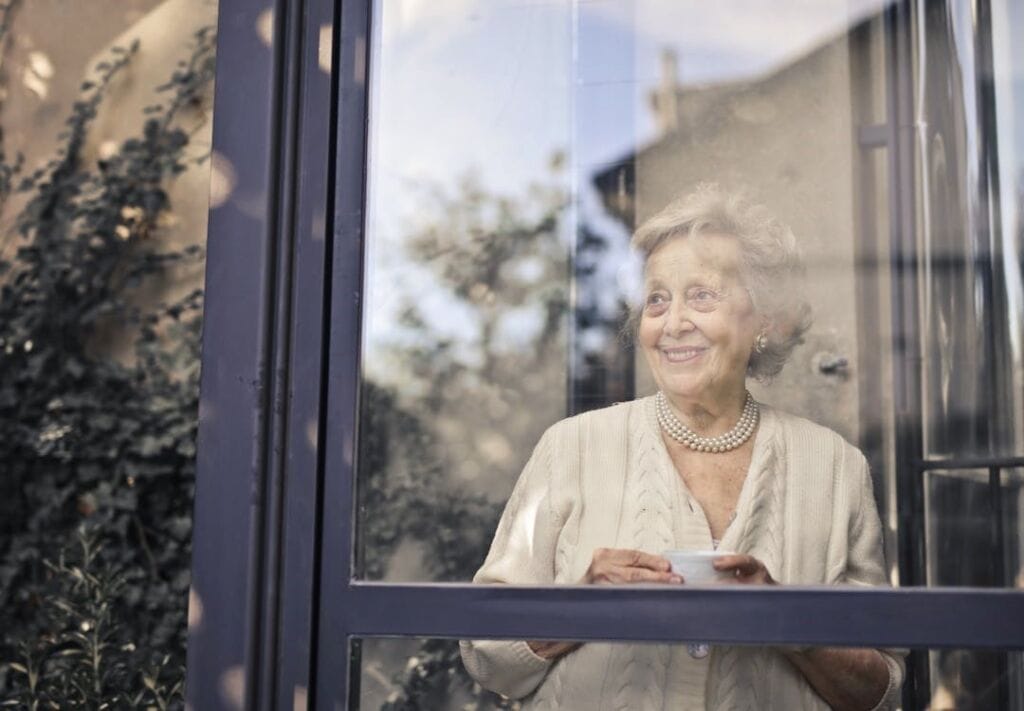Many older adults prefer to remain in their own homes as they age. It’s familiar, it feels comfortable, and it offers a sense of independence that other options can’t always match. But living alone or with minimal assistance comes with its challenges, particularly around safety, health, and daily routine.
DEEPER DIVE: Read all the Ranking Arizona Top 10 lists here
In the past, aging in place often meant relying heavily on in-person caregivers or family members to handle health monitoring, reminders, and home safety. Now, technology offers new ways to support independence while reducing risk. From smart home systems to wearable devices, tech is making it easier for seniors to manage on their own terms.

These tools don’t replace personal care, but they can fill gaps in daily routines, support long-term health, and keep loved ones connected. In this article, we’ll look at the key technologies helping older adults age in place more confidently and comfortably.
Health Tech That Supports Independence
Managing chronic health conditions is one of the biggest challenges for older adults who want to stay at home. Issues like high blood pressure, diabetes, or heart conditions need regular attention, but frequent trips to a clinic aren’t always practical or comfortable.
This is where health-focused technology makes a real difference. Wearable trackers and connected health devices let people monitor their health from home and share results with doctors in real time. These tools are simple to use and reduce the stress of constant travel or appointments.
Devices like fall detectors and medication reminders work well alongside tools such as remote blood pressure monitoring, which gives older adults and their doctors better insight without leaving the house. This kind of technology supports early intervention when something seems off, helping to prevent bigger issues later.
The ability to track health at home and involve healthcare providers remotely empowers older adults to stay informed and take action without giving up control or privacy.
Smart Home Features That Make Daily Life Easier
Beyond health monitoring, smart home technology plays a big role in simplifying everyday routines. Voice assistants like Alexa or Google Home can set reminders, play music, or make calls—all without touching a device. This is especially helpful for anyone with limited mobility or arthritis.
Smart lighting systems allow users to control lights with their voice or phone, reducing the risk of trips and falls in dark areas. Thermostats can be adjusted remotely or programmed to keep temperatures steady without fiddling with small dials or buttons.
Smart locks and video doorbells also offer added safety. They let seniors see who’s at the door before answering or even unlock the door for a family member without getting up.
These features don’t just add convenience—they remove small physical tasks that can become hard over time, making daily living safer and more manageable.
Fall Prevention and Emergency Response Tech
Falls are one of the most common reasons older adults end up in emergency rooms. They can lead to serious injuries and longer recovery times. That’s why fall prevention is a big focus when it comes to aging in place safely.
Simple tools like motion-activated lights in hallways or staircases help reduce nighttime accidents. Non-slip flooring or rugs with grip pads can also cut down on fall risks. However, the biggest difference comes from tech designed to detect and respond to falls quickly.
Wearable fall detectors are available as watches, pendants, or clips. These devices can automatically send alerts to family members or emergency services if a fall happens. Many models don’t require pushing a button, which is important if the person is injured or unable to respond.
In-home alert systems with voice activation or pull cords add another layer of safety. When paired with a response service, these tools give older adults more confidence to stay independent while providing peace of mind for families.
Medication Management Tools
Managing medications becomes harder with age, especially when there are multiple prescriptions with different schedules. Missing a dose or taking too much can lead to health problems or hospital visits.
Technology offers solutions that make this easier. Automated pill dispensers release the right dose at the right time and lock away other doses until they’re needed. Some models come with alarms, flashing lights, or voice prompts to remind users it’s time to take their medication.
There are also app-based reminder systems that work with smartphones or tablets. These can send alerts to the user or even notify a caregiver if a dose is missed. Some smart pill bottles have sensors that track when the bottle was opened and log the data for later review.
These tools reduce the chance of mistakes and help older adults stick to their treatment plans without needing constant supervision.
Staying Connected with Family and Care Teams
Isolation can be just as harmful as physical health problems. Many older adults live alone and don’t see family members or friends as often as they’d like. Technology helps close that gap.
Video calling platforms like Zoom or FaceTime make it easy to stay in touch with family, no matter the distance. Voice assistants can make these calls without needing to dial manually. This makes staying social easier, even for those who aren’t tech-savvy.
Many care providers now use online health portals where patients can message their doctors, view lab results, or schedule appointments. These tools help keep communication open between medical teams and patients from the comfort of home.
Caregiver apps also allow multiple family members to stay updated on health, routines, or any changes in condition. These features help build a team approach to support, without having everyone physically present every day.
Aging in place is more achievable now than it was even a few years ago. Technology gives older adults more ways to stay safe, manage their health, and stay in touch with the people who matter.
These tools don’t need to be complex. Small, smart changes can make a big difference in daily life. For older adults who want to stay home longer—and families who want to support that choice—tech offers practical solutions that truly help.




